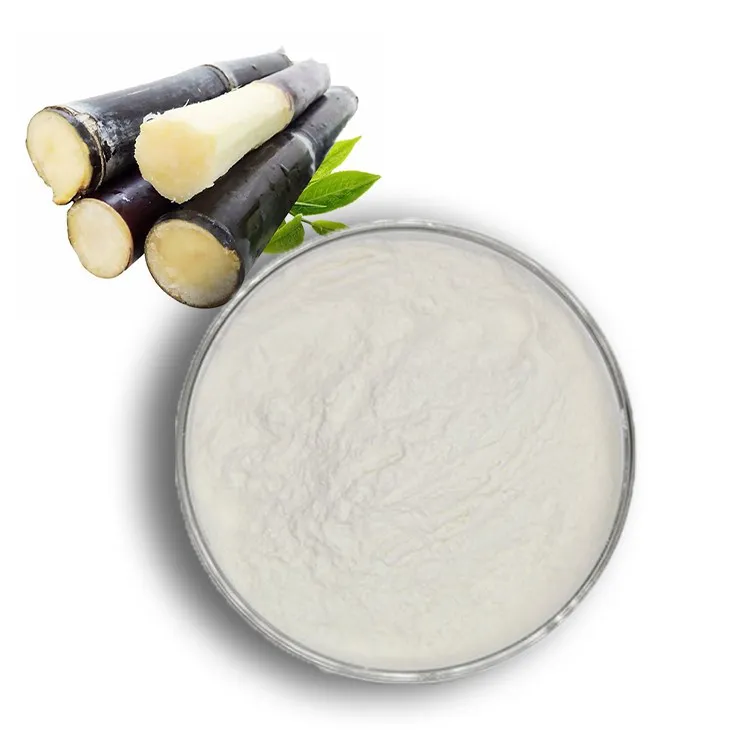- 0086-571-85302990
- sales@greenskybio.com
Success in the Soil: Real-World Results of Seaweed Extract Use in Plant Care
2024-07-16
1. Introduction to Seaweed Extract in Plant Care
Seaweed extract has been steadily gaining recognition in the field of plant care. Derived from various types of seaweeds, it contains a rich blend of nutrients, hormones, and bioactive compounds. These components work in harmony to provide a plethora of benefits to plants. In recent years, its use has spread from small - scale gardening to large - scale agricultural operations, signifying its growing importance in the world of plant cultivation.
2. The Science Behind Seaweed Extract
Seaweed extract is a complex mixture. It contains macronutrients such as nitrogen, phosphorus, and potassium, albeit in relatively small amounts compared to traditional fertilizers. However, its real value lies in the micronutrients and bioactive substances it contains.
2.1 Micronutrients
These include elements like iron, zinc, manganese, and copper. Micronutrients are essential for various plant physiological processes, such as enzyme activation and chlorophyll synthesis. Their presence in seaweed extract helps to correct micronutrient deficiencies in the soil, which can often limit plant growth.
2.2 Hormones and Bioactive Compounds
Seaweed extract also contains plant hormones like auxins, cytokinins, and gibberellins. Auxins, for example, play a crucial role in root development. They stimulate the elongation of root cells, leading to a more extensive root system. Cytokinins are involved in cell division and differentiation, promoting the growth of shoots and leaves. Gibberellins can influence stem elongation and flowering. In addition to hormones, bioactive compounds such as alginates, laminarin, and fucoidan are present. These compounds have been shown to enhance plant resistance to stressors such as drought, salinity, and diseases.
3. Enhancing Soil Health
One of the most significant contributions of seaweed extract to plant care is its impact on soil health.
3.1 Soil Structure Improvement
The alginates in seaweed extract can bind with soil particles, improving soil structure. This results in better soil aeration and water infiltration. Good soil structure is essential for root growth, as it allows roots to penetrate easily and access nutrients and water. In compacted soils, the application of seaweed extract can help to loosen the soil, creating a more favorable environment for plants.
3.2 Microbial Activity
Seaweed extract can also stimulate soil microbial activity. Microbes play a vital role in nutrient cycling in the soil. They break down organic matter, releasing nutrients in forms that plants can absorb. By promoting microbial growth, seaweed extract indirectly provides plants with a more accessible source of nutrients. Some studies have shown that the application of seaweed extract can increase the population of beneficial soil bacteria and fungi, which can further enhance soil fertility.
4. Promoting Plant Growth
The effects of seaweed extract on plant growth are multi - faceted.
4.1 Root Growth
As mentioned earlier, the auxins in seaweed extract stimulate root elongation. A well - developed root system is the foundation for a healthy plant. It allows plants to anchor firmly in the soil and absorb water and nutrients more efficiently. In addition to elongation, seaweed extract can also promote root branching. This increases the surface area of the root system, enabling better uptake of nutrients from the soil.
4.2 Shoot and Leaf Growth
Cytokinins and gibberellins in seaweed extract contribute to the growth of shoots and leaves. They promote cell division and elongation, resulting in taller plants with more extensive foliage. The increased leaf area is beneficial for photosynthesis, as it allows plants to capture more sunlight and convert it into energy. This, in turn, can lead to faster overall plant growth and development.
5. Increasing Crop Yields
The combination of enhanced soil health and promoted plant growth ultimately leads to increased crop yields.
5.1 Vegetable Crops
For vegetable crops such as tomatoes, cucumbers, and lettuce, seaweed extract has shown remarkable results. In field trials, tomatoes treated with seaweed extract had a higher number of fruits per plant. The fruits were also larger and had a better quality, with improved taste and shelf - life. Cucumbers showed increased vine length and more cucumbers per vine, while lettuce had a greater leaf mass and a longer harvest period.
5.2 Fruit Crops
Fruit crops like apples, oranges, and berries have also benefited from seaweed extract. Apple trees treated with it had increased fruit set and a reduced incidence of fruit drop. The apples were larger and had a more uniform shape. Orange trees showed improved flowering and fruiting, with a higher sugar content in the fruits. Berries, such as strawberries and blueberries, had larger berries, more intense colors, and a sweeter taste.
5.3 Grain Crops
In the case of grain crops like wheat, rice, and corn, seaweed extract has been found to increase the number of grains per ear or panicle. The grains were also plumper and had a higher protein content. This not only improves the quantity but also the quality of the grain yield.
6. Benefits for Different Types of Plants
Seaweed extract offers unique benefits to different types of plants.
6.1 Ornamental Plants
Ornamental plants, such as roses, petunias, and lilies, thrive with the use of seaweed extract. Roses treated with it have more vibrant colors, larger blooms, and a longer blooming period. Petunias show more prolific flowering and a denser growth habit. Lilies have stronger stems and more fragrant flowers. The extract helps to enhance the aesthetic appeal of these plants, making them more desirable for landscaping and floral arrangements.
6.2 Indoor Plants
Indoor plants, including common houseplants like pothos, spider plants, and peace lilies, also benefit from seaweed extract. These plants often face challenges such as low light levels and restricted root space. Seaweed extract can help them overcome these issues by promoting root growth and enhancing their ability to tolerate less - than - ideal conditions. It can also improve the appearance of indoor plants, with greener leaves and more vigorous growth.
6.3 Medicinal Plants
Medicinal plants, such as aloe vera, ginseng, and echinacea, can have their active ingredient content enhanced with seaweed extract. Aloe vera plants treated with it may have a higher concentration of beneficial compounds in their leaves. Ginseng plants can have improved root development, which is crucial for its medicinal properties. Echinacea plants may produce more of the bioactive compounds responsible for its immune - boosting effects.
7. Application Methods and Considerations
When using seaweed extract in plant care, there are several application methods and considerations.
7.1 Foliar Spray
Foliar spraying is a common method of applying seaweed extract. It involves spraying a diluted solution of the extract directly onto the leaves of plants. This method allows for quick absorption of the nutrients and bioactive compounds by the leaves. However, it is important to choose the right time for foliar spraying, preferably early in the morning or late in the afternoon when the stomata on the leaves are open. Also, the concentration of the solution should be carefully adjusted to avoid leaf burn.
7.2 Soil Drench
Soil drenching is another effective method. In this case, a diluted seaweed extract solution is poured onto the soil around the base of the plant. This allows the roots to absorb the nutrients over time. Soil drenching is particularly useful for plants with deeper root systems. It is important to ensure that the soil is moist before applying the drench to facilitate the movement of the solution through the soil.
7.3 Compatibility with Other Inputs
Seaweed extract is generally compatible with other fertilizers and pesticides. However, it is advisable to test for compatibility before mixing. Some fertilizers may interact with the components of seaweed extract, affecting its effectiveness. When using pesticides, it is important to follow the recommended intervals between applications to avoid any negative impacts on plant health.
8. Conclusion
Seaweed extract has proven to be a valuable asset in plant care. Its ability to enhance soil health, promote plant growth, and increase crop yields makes it an attractive option for gardeners and farmers alike. With its diverse range of benefits for different types of plants and its relatively easy application methods, it is likely to continue to gain popularity in the future. As research on seaweed extract continues, we can expect to discover even more ways in which it can contribute to the success of plants in the soil.
FAQ:
What is seaweed extract?
Seaweed extract is a product derived from seaweeds. It contains a rich blend of nutrients, growth - promoting substances like cytokinins, auxins, and other bioactive compounds. These components are beneficial for plants when applied to the soil or foliage.
How does seaweed extract enhance soil health?
Seaweed extract enhances soil health in multiple ways. It improves soil structure, making it more porous and allowing better water infiltration and root penetration. It also promotes the growth of beneficial soil microorganisms such as bacteria and fungi, which play important roles in nutrient cycling and availability to plants.
Can seaweed extract be used for all types of plants?
Yes, seaweed extract can be used for a wide variety of plants. It has been shown to be beneficial for both ornamental plants in gardens, such as roses and petunias, and for agricultural crops like wheat, tomatoes, and lettuce. However, the specific application methods and dosages may vary depending on the type of plant.
How does seaweed extract promote plant growth?
The nutrients and growth - promoting substances in seaweed extract stimulate various aspects of plant growth. The cytokinins can encourage cell division, leading to increased shoot and root growth. Auxins can influence root development and overall plant architecture. Additionally, the micronutrients present in the extract supply essential elements for plant metabolism.
What are the typical application methods of seaweed extract?
Seaweed extract can be applied in different ways. It can be diluted in water and used as a soil drench, which allows the nutrients and bioactive compounds to be absorbed by the roots. It can also be sprayed on the foliage as a foliar spray. In some cases, it can be incorporated into compost or other soil amendments.
Related literature
- The Role of Seaweed Extracts in Sustainable Agriculture"
- "Seaweed Extracts: A Promising Bio - stimulant for Plant Growth"
- "Beneficial Effects of Seaweed - based Products on Soil - plant Systems"
- ▶ Hesperidin
- ▶ Citrus Bioflavonoids
- ▶ Plant Extract
- ▶ lycopene
- ▶ Diosmin
- ▶ Grape seed extract
- ▶ Sea buckthorn Juice Powder
- ▶ Fruit Juice Powder
- ▶ Hops Extract
- ▶ Artichoke Extract
- ▶ Mushroom extract
- ▶ Astaxanthin
- ▶ Green Tea Extract
- ▶ Curcumin
- ▶ Horse Chestnut Extract
- ▶ Other Product
- ▶ Boswellia Serrata Extract
- ▶ Resveratrol
- ▶ Marigold Extract
- ▶ Grape Leaf Extract
- ▶ New Product
- ▶ Aminolevulinic acid
- ▶ Cranberry Extract
- ▶ Red Yeast Rice
- ▶ Red Wine Extract
-
Nettle leaf extract
2024-07-16
-
Calendula Extract
2024-07-16
-
Nutmeg Extract
2024-07-16
-
Resveratrol extract
2024-07-16
-
Red Wine Extract
2024-07-16
-
Sugarcane Extract
2024-07-16
-
Cranberry Extract
2024-07-16
-
Hedyotis Diffusa Extract
2024-07-16
-
Angelica sinensis extract
2024-07-16
-
Konjac Powder
2024-07-16





















